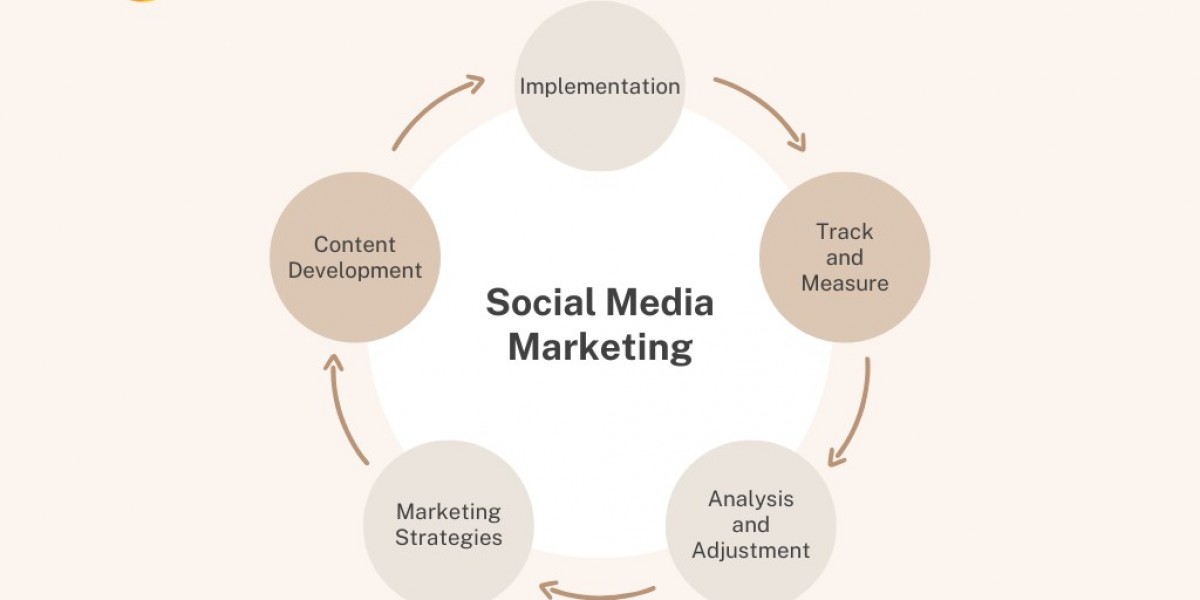Introduction
In today’s digital landscape, businesses face a critical decision when developing their social media strategy: should they focus on organic growth or invest in paid advertising? As a leading social media marketing company in Mumbai, The Yellow Strawberry understands that this decision significantly impacts your marketing budget and overall business results. The debate between organic and paid social media isn’t simply about which is better—it’s about understanding which approach delivers the best return on investment (ROI) for your specific business goals, target audience, and available resources.
Understanding Organic Social Media
What Is Organic Social Media?
Organic social media refers to the free content (posts, videos, stories, comments, etc.) that all users, including businesses, share and promote on their social media platforms. This content appears in the feeds of your current followers, as well as potentially to their connections if they engage with your content.
Key Characteristics of Organic Social Media
- Zero Direct Publishing Costs: Creating and publishing organic content doesn’t require payment to the platform.
- Community Building: Focuses on authentic engagement and building meaningful relationships with followers.
- Long-Term Strategy: Results typically develop gradually as your audience and engagement grow over time.
- Algorithm Dependent: Visibility depends heavily on each platform’s algorithms, which determine who sees your content.
- Content Driven: Success relies on creating valuable, relevant content that resonates with your audience.
Benefits of Organic Social Media
- Trust Building: Authentic interactions foster deeper relationships with your audience.
- Sustainable Growth: Creates a foundation for long-term brand presence and loyalty.
- Customer Service Channel: Provides a platform for addressing customer inquiries and concerns.
- Increased Brand Loyalty: Regular, meaningful engagement encourages repeat business.
- Enhanced Brand Personality: Allows for more creative freedom to showcase your brand’s unique voice.
Understanding Paid Social Media
What Is Paid Social Media?
Paid social media refers to sponsored content or advertisements that businesses pay social media platforms to display to specific user segments. These ads appear in users’ feeds, stories, or as display ads, regardless of whether those users follow your business.
Key Characteristics of Paid Social Media
- Financial Investment Required: Requires a budget allocation for ad spend.
- Targeted Reach: Allows precise targeting based on demographics, interests, behaviors, and more.
- Immediate Visibility: Provides instant exposure to your selected audience.
- Measurable Results: Offers detailed analytics and performance metrics.
- Scalable Campaigns: Can be quickly adjusted and scaled based on performance.
Benefits of Paid Social Media
- Extended Reach: Access to audiences beyond your current followers.
- Precise Targeting: Ability to reach specific audience segments most likely to convert.
- Quick Results: Faster visibility and potential for immediate engagement.
- Controlled Exposure: Predictable visibility not dependent on organic algorithms.
- Advanced Analytics: Detailed insights into campaign performance and audience behavior.
Measuring ROI for Social Media
Challenges in Measuring Social Media ROI
Accurately measuring ROI for social media activities presents unique challenges:
- Attribution Complexity: Users often interact with multiple touchpoints before converting.
- Value of Engagement: Difficulty in assigning monetary value to likes, comments, and shares.
- Long Sales Cycles: Benefits of social media may materialize long after the initial interaction.
- Indirect Benefits: Brand awareness and sentiment improvements are difficult to quantify.
Key Metrics for Measuring Organic Social Media ROI
- Engagement Rate: Likes, comments, shares, and saves relative to followers.
- Audience Growth: New followers gained over time.
- Reach and Impressions: How many people see your content.
- Website Traffic: Visitors referred from social media platforms.
- Conversion Rate: Percentage of social media visitors who complete desired actions.
- Customer Lifetime Value (CLV): Value of customers acquired through organic social media.
Key Metrics for Measuring Paid Social Media ROI
- Cost Per Click (CPC): Average cost for each click on your ad.
- Cost Per Mille (CPM): Cost per thousand impressions.
- Cost Per Acquisition (CPA): Cost to acquire one customer through the campaign.
- Click-Through Rate (CTR): Percentage of people who click after seeing your ad.
- Conversion Rate: Percentage of users who complete desired actions after clicking.
- Return on Ad Spend (ROAS): Revenue generated for every rupee spent on advertising.
Comparative ROI Analysis: Organic vs. Paid
Cost Efficiency
Organic Social Media:
- Initial investment focuses on content creation and community management.
- No direct media costs, but requires significant time investment.
- Higher ROI potential for businesses with established audiences and quality content.
Paid Social Media:
- Requires both content creation costs and media budget.
- Provides more predictable cost structures based on campaign objectives.
- Often delivers quicker returns but at a higher overall cost.
Time to Results
Organic Social Media:
- Typically requires 6-12 months to build meaningful traction.
- Results compound over time as audience and engagement grow.
- Best suited for businesses with longer strategic horizons.
Paid Social Media:
- Can generate results within hours or days of campaign launch.
- Allows for quick testing and optimization.
- Ideal for time-sensitive promotions or quick wins.
Audience Reach and Targeting
Organic Social Media:
- Limited primarily to existing followers and their networks.
- Difficult to reach specific demographic segments consistently.
- Reach has been increasingly restricted by platform algorithms.
Paid Social Media:
- Access to vast audience segments beyond your followers.
- Sophisticated targeting options based on demographics, interests, behaviors.
- More consistent reach regardless of algorithm changes.
Longevity of Results
Organic Social Media:
- Content can continue generating traffic and engagement long after publishing.
- Builds sustainable audience relationships with lasting value.
- Creates compounding returns as your content library and audience grow.
Paid Social Media:
- Results typically end when campaign funding stops.
- Limited residual benefits after campaign conclusion.
- Requires continuous investment to maintain visibility and results.
When Organic Social Media Delivers Better ROI
- Brand Building and Reputation Management: When establishing your brand voice and values.
- Customer Service and Community Management: For addressing customer concerns and building loyalty.
- Content Marketing and Thought Leadership: When sharing educational or inspirational content.
- Long-Term Relationship Building: For businesses focusing on customer lifetime value over immediate transactions.
- Limited Marketing Budget: When financial resources are constrained but time and creativity are available.
When Paid Social Media Delivers Better ROI
- New Product Launches or Time-Sensitive Promotions: When immediate visibility is crucial.
- Reaching New Audience Segments: When expanding into new markets or demographics.
- E-commerce and Direct Response Campaigns: When seeking immediate sales or conversions.
- Competitive Markets: When organic reach is limited by high competition.
- Testing New Content or Offers: When gathering quick data on audience preferences.
Best Practices for Maximizing Organic Social Media ROI
- Content Quality Over Quantity: Focus on creating meaningful, valuable content rather than posting frequently.
- Strategic Platform Selection: Invest in platforms where your target audience is most active.
- Community Engagement: Actively participate in conversations and respond to comments.
- Employee Advocacy: Leverage team members to extend content reach.
- Consistent Brand Voice: Maintain authentic, consistent messaging across all content.
- Visual Storytelling: Utilize high-quality images and videos to increase engagement.
- User-Generated Content: Encourage and share content created by your customers.
Best Practices for Maximizing Paid Social Media ROI
- Targeted Audience Segmentation: Define narrow, specific audience segments for campaigns.
- A/B Testing: Continuously test different creative elements, messaging, and targeting.
- Budget Management: Start with small tests before scaling successful campaigns.
- Retargeting Strategies: Focus on users who have previously engaged with your brand.
- Clear Call-to-Actions: Ensure ads have specific, compelling CTAs.
- Mobile Optimization: Design ads with mobile users as the primary audience.
- Regular Performance Analysis: Monitor metrics closely and optimize campaigns accordingly.
The Integrated Approach: Combining Organic and Paid
The highest ROI often comes from strategically combining organic and paid social media efforts:
- Boost High-Performing Organic Content: Use paid promotion for organic posts showing strong engagement.
- Remarketing to Engaged Organic Audiences: Target paid ads to users who engaged with your organic content.
- Funnel Strategy: Use paid social for awareness and lead generation, then organic for nurturing and retention.
- Content Testing: Test content organically before investing in paid distribution.
- Complementary Messaging: Develop coordinated themes across organic and paid campaigns.
Case Study: Balanced Approach in Practice
A mid-sized e-commerce company in Mumbai implemented an integrated social media strategy with impressive results:
- Organic Strategy: Created educational content about product usage and industry trends, built an engaged community through consistent interaction, and showcased customer success stories.
- Paid Strategy: Ran targeted product ads to lookalike audiences, promoted limited-time offers, and retargeted website visitors who abandoned carts.
- Results:
45% increase in overall social media-driven revenue
28% lower customer acquisition cost
65% higher customer retention rate for those who engaged with organic content
This balanced approach leveraged the strengths of both organic and paid strategies, creating synergy that neither could achieve independently.
Conclusion: Making the Right Choice for Your Business
The “better ROI” between organic and paid social media isn’t universal—it depends entirely on your specific business goals, resources, timeline, and audience. Most successful businesses employ both strategies in complementary ways.
For immediate results, precise targeting, and controlled visibility, paid social media typically delivers stronger short-term ROI. For sustainable brand building, audience relationships, and long-term value, organic social media often provides better returns over time.
The Yellow Strawberry, as a leading social media marketing company in Mumbai, recommends a strategic approach that combines both methodologies. We help businesses develop customized social media strategies that maximize ROI by leveraging the strengths of both organic and paid approaches, tailored to specific business objectives and market conditions.
The most effective social media strategy isn’t choosing between organic and paid—it’s determining the right balance between them to achieve your unique business goals efficiently and effectively.








